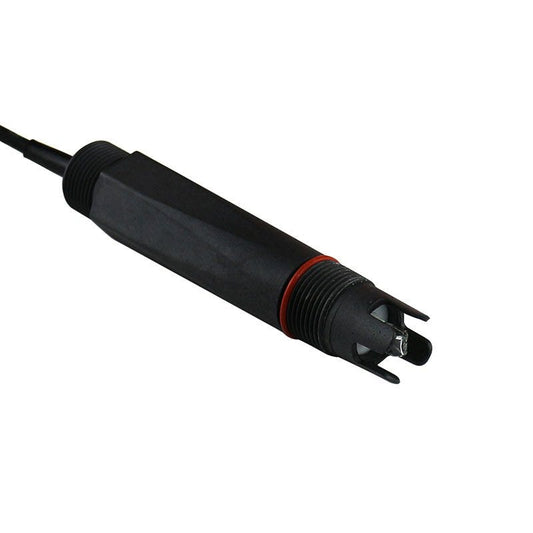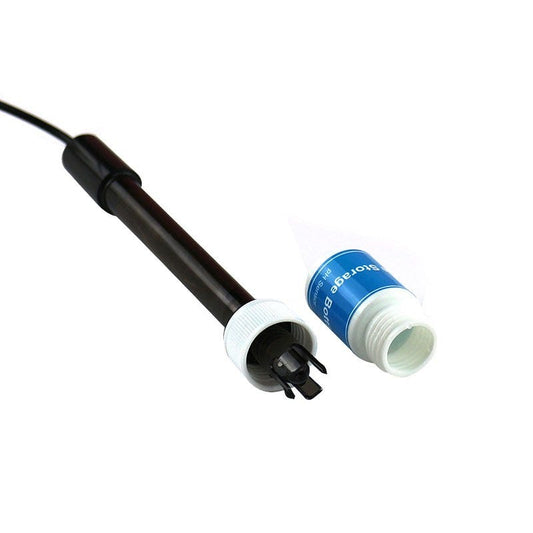pH + PPM + EC Meters & Solutions
At GrowersHouse, find pro-grade pH, PPM (TDS), and EC meters & solutions for precise nutrient monitoring. Calibrate fast, measure accurately, and keep your hydroponic systems, greenhouses, and indoor farms thriving with consistent, repeatable results.
-
TrolMaster Intank pH Sensor, Heavy Duty (PPH-2)
Vendor:TrolMasterRegular price $187.53 USDRegular priceUnit price / per$187.53 USDSale price $187.53 USD -
TrolMaster pH Sensor for Reservoir (PPH-1)
Vendor:TrolMasterRegular price $83.79 USDRegular priceUnit price / per$83.79 USDSale price $83.79 USD
pH + PPM + EC Meters & Solutions
For Hydroponic Growing, Greenhouses & Indoor Farms
Dial in precise nutrient management with professional-grade pH, PPM (TDS), and EC meters designed for controlled-environment agriculture. At GrowersHouse, our selection delivers fast calibration, rock-solid accuracy, and durable probes—so you can balance acidity/alkalinity, verify nutrient concentration, and track electrical conductivity with confidence. Whether you’re running deep-water culture, drip-to-waste, or substrate systems in greenhouses, indoor farms, or vertical setups, these instruments help you prevent lockout, reduce stress, and maximize uniform growth and yield. From handheld testers and combo pens to continuous inline monitors and calibration solutions, every tool in this collection is curated to simplify daily checks, speed up troubleshooting, and keep your root zone conditions consistent across propagation, veg, and finish....

Benefits
- Stabilize nutrient availability with accurate pH readings.
- Hit target strength using PPM/TDS for consistent feeding across zones.
- Verify solution quality and salinity trends via EC for better uptake.
- Reduce waste, prevent deficiencies/toxicity, and boost repeatability.
- Speed calibration and maintenance with reliable buffers and storage solutions.
Best Uses
- Daily reservoir checks and fertigation mixing
- Substrate runoff testing and irrigation tuning
- Inline monitoring for automated systems and multi-zone rooms
- Lab-style verification for SOPs, audits, and quality control
Types
-
Handheld pH/PPM/EC Pens: Quick spot checks and mobile use.
-
Combo Meters: pH + EC/PPM in one device for streamlined workflows.
-
Continuous/Inline Monitors: Real-time visibility for res tanks and dosing lines.
- Calibration Solutions & Probes: pH buffers (4.01/7.00/10.01), 1413 µS/2.77 mS EC standards, storage solutions, and replacement electrodes.
How These Tools Help Growers
Consistency, clarity, and control
Reliable pH/PPM/EC data turns guesswork into repeatable SOPs. You’ll mix nutrients faster, verify strengths before irrigating, and spot drift early—protecting roots from imbalance, improving uptake, and keeping canopies uniform. With proper calibration and probe care, readings stay accurate season after season.
Frequently Asked Questions
What is EC and PPM in hydroponics?
EC (electrical conductivity) measures a solution’s ability to conduct electricity, which correlates to dissolved salts (nutrients). PPM (parts per million) or TDS estimates total dissolved solids derived from EC using a conversion factor. Both indicate nutrient strength.
What is the optimal pH and EC for hydroponics?
Most crops thrive around pH 5.5–6.5 depending on species and stage. EC targets vary by crop and growth phase (e.g., lower in propagation, higher in aggressive veg/finish). Always follow crop-specific guidelines and monitor plant response.
What is a good PPM for hydroponics?
Good PPM depends on crop and stage: seedlings/starts are typically low, while established plants tolerate higher levels. Use manufacturer feed charts as a starting point, then fine-tune based on runoff readings and plant health.
Why is pH monitoring important in a hydroponic system and what is the ideal pH range for growing?
pH controls nutrient availability at the root zone. Out-of-range pH causes lockout or toxicity even when EC/PPM is correct. A common ideal range is 5.5–6.5 for most hydroponic crops.
How do you measure electrical conductivity in hydroponics?
Use an EC meter or combo meter. Rinse the probe, immerse it in the solution, let the reading stabilize, and compare to your target. Calibrate regularly with EC standards and keep probes clean and stored properly.




